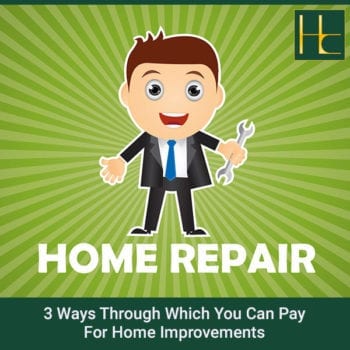 No matter how good care you take of your home, you must admit it: from time to time, there’s room for some renovation, in order to give it a fresh new look. However, home renovation usually requires a pretty serious budget, depending on what you’re looking forward to doing.
No matter how good care you take of your home, you must admit it: from time to time, there’s room for some renovation, in order to give it a fresh new look. However, home renovation usually requires a pretty serious budget, depending on what you’re looking forward to doing.
And, sometimes, you just don’t have what you need in your account. But we have some good news: there are ways of solving this problem!
Let’s take a few moments and talk about three of the most popular ways of paying for home renovation, shall we?
Personal loans
Obviously, this is the easiest solution. Obtaining a personal loan is the best choice for mid-size projects, like a makeover for your bathroom or new windows.
There are several lenders you can choose from, like banks, credit unions or even online lenders. Plus, you can review all of them before applying for a loan, to see which one offers the lowest interest rates, has fees or not and promises a quick payout.
Plus, we’re talking about unsecured loans, which means that you don’t need to use your place as collateral to qualify since everything is based on a credit score.
Our recommendation is to do some proper research before applying for a loan. Remember, they’re based on your credit score and if it’s far from being perfect, you risk ending up with high-interest rates. Additionally, some lenders may charge you for application processing, late payment or even prepayment. Check all details carefully before making the final decision.
Home equity lines of credit (HELOC)
Clearly an interesting option for those who have home renovation plans, a HELOC is an ongoing stream of cash, available when you need it, up to the limit you are approved for.
Similar to a credit card, the main difference is the fact that the “draw period” comes with an end date, usually around 10 years. If you don’t manage to pay it entirely throughout this period, the difference will be converted into a fixed home loan.
It definitely has some pros, like, for example, being a secured loan, backed by your home. This means that you can cover for lower interest rates, compared to a personal loan. Also, it’s a stream of revolving credit, meaning that whenever you need money, you can take it. So, overall, it’s a good option for lengthy home renovation projects.
As for the cons, we should mention that you need home equity to get cash. Specifically, your home needs to have a bigger value than what you are planning to borrow. And, very important, in most cases, a HELOC comes with a variable interest rate, meaning that your monthly payments can increase or decrease, depending on the market.
Government loans
Probably the most ‘tempting’ way of financing, a government loan can help you save a lot on the cost of interest, as well as insurance. If you qualify for one, of course,
There are two main types of government loans: FHA Title 1 and VA cash-out refinance loans.
The first allows you to borrow up to $25,000, without any equity in your home and it’s a great option for new owners. But all the money must go into renovations that improve the livability of the place, specifically!
As for the VAs, this type of loan guarantees the full value of your home. If you end up not being able to pay for it anymore, that loan guaranty is practically the “insurance” for the lender.
No matter which home renovation loan you opt for, make sure you work alongside professionals when giving your place a new look!
Hybrid Construction is a full service licensed and insured contractor in Florida, promising to deliver top services to residential clients, from minor upgrades to complete remodeling.
Picture Credit: Pixabay
